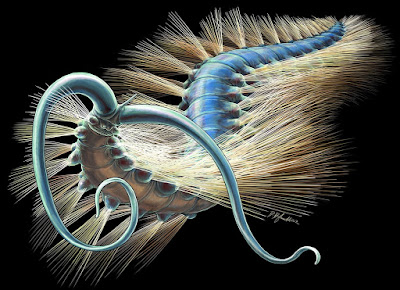[Most Recent Entries] [Calendar View]
Wednesday, January 24th, 2018
| Time | Event | ||||
| 11:01a | [Botany • 2017] Zingiber arunachalensis • A New Species (Zingiberaceae) from northeastern India
In 2015, during a floristic expedition in northeastern India, a population of an unusual Zingiber Miller (1754: 525) was found near Durga Mandir, between Bomdilla and Balukpong, in West Kameng District, Arunachal Pradesh. At a first glance the species clearly belongs to section Cryptanthium Horaninow (1862: 27) in having a procumbent peduncle. Detailed studies revealed that it does not match any of the known species of Indian Zingiber, hence it is described here as new. Plants of this population are morphologically similar to Z. bipinianum Roy et al. (2015: 298) and Z. mizoramensis Kumar et al. (2015: 81), but detailed studies of the types and protologues confirm the novelty of this species. We also consulted relevant literature discussing Indian Zingiberaceae, which further confirms that this is a new species (e.g. Bai et al. 2015, Baker 1892, Leong-Škorničková et al. 2015, Kishor & Leong-Škorničková 2013, Kumar et al. 2013, 2015, Mood & Theilade 2002, Roscoe 1828, Sabu 2003, 2006, Sabu et al. 2009, 2013b, Talukdar et al. 2015, Thongam & Konsam 2014, Thongam et al. 2013, Triboun et al. 2014, Tripathi & Singh 2006, Wu & Larsen 2000). Keywords: Arunachal Pradesh, India, new species, Zingiber, Zingiberales, Monocots Zingiber arunachalensis A.Joe, T.Jayakrishnan, Hareesh & M.Sabu, sp. nov. Alfred Joe, Thachat Jayakrishnan, Vadakkoot Sankaran Hareesh and Mamiyil Sabu. 2017. Zingiber arunachalensis (Zingiberaceae): A New Species from northeastern India. Phytotaxa. 309(1); 95–98. ResearchGate.net/publication/317426263_Zingiber_arunachalensis_a_new_species_from_northeastern_India | ||||
| 11:06a | [Paleontology • 2018] Kootenayscolex barbarensis • A New Burgess Shale Polychaete and the Origin of the Annelid Head Revisited
Highlights: •An abundant Cambrian polychaete preserves exceptional morphological details •The new species possesses a median antenna and large palps on the prostomium •Neuropodial chaetae are present on the mouth-bearing peristomium •A chaetigerous origin for the peristomial portion of the annelid head is proposed Summary Annelida is one of the most speciose (∼17,000 species) and ecologically successful phyla. Key to this success is their flexible body plan with metameric trunk segments and bipartite heads consisting of a prostomium bearing sensory structures and a peristomium containing the mouth. The flexibility of this body plan has traditionally proven problematic for reconstructing the evolutionary relationships within the Annelida. Although recent phylogenies have focused on resolving the interrelationships of the crown group, many questions remain regarding the early evolution of the annelid body plan itself, including the origin of the head. Here we describe an abundant and exceptionally well-preserved polychaete with traces of putative neural and vascular tissues for the first time in a fossilized annelid. Up to three centimeters in length, Kootenayscolex barbarensis gen. et sp. nov. is described based on more than 500 specimens from Marble Canyon and several specimens from the original Burgess Shale site (both in British Columbia, Canada). K. barbarensis possesses biramous parapodia along the trunk, bearing similar elongate and thin notochaetae and neurochaetae. A pair of large palps and one median antenna project from the anteriormost dorsal margin of the prostomium. The mouth-bearing peristomium bears neuropodial chaetae, a condition that is also inferred in Canadia and Burgessochaeta from the Burgess Shale, suggesting a chaetigorous origin for the peristomial portion of the head and a secondary loss of peristomial parapodia and chaetae in modern polychaetes. Keywords: Annelida, polychaete, Burgess Shale, Cambrian Explosion, body plan, prostomium, peristomium, annelid head evolution, Marble Canyon
Karma Nanglu and Jean-Bernard Caron. 2018. A New Burgess Shale Polychaete and the Origin of the Annelid Head Revisited. Current Biology. 28(2); p319–326.e1. DOI: 10.1016/j.cub.2017.12.019 New 508-million-year-old bristle worm species from British Columbia's Burgess Shale wiggles into evolutionary history phy.so/435841146 via @physorg_com Half Billion-Year-Old Fossil Clue to How Worms Evolved on.natgeo.com/2n58ibF via @NatGeo |
| << Previous Day |
2018/01/24 [Calendar] |
Next Day >> |






